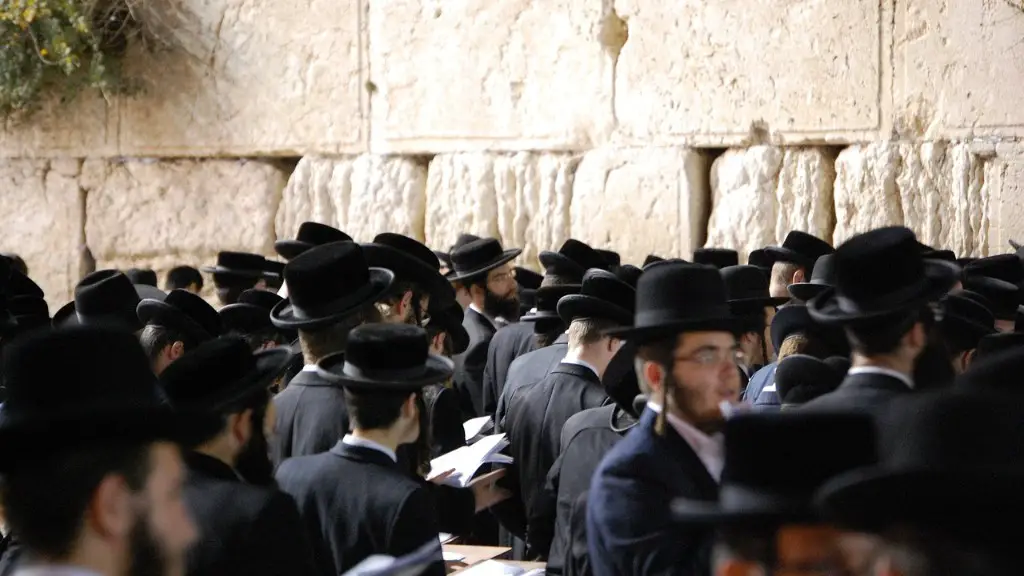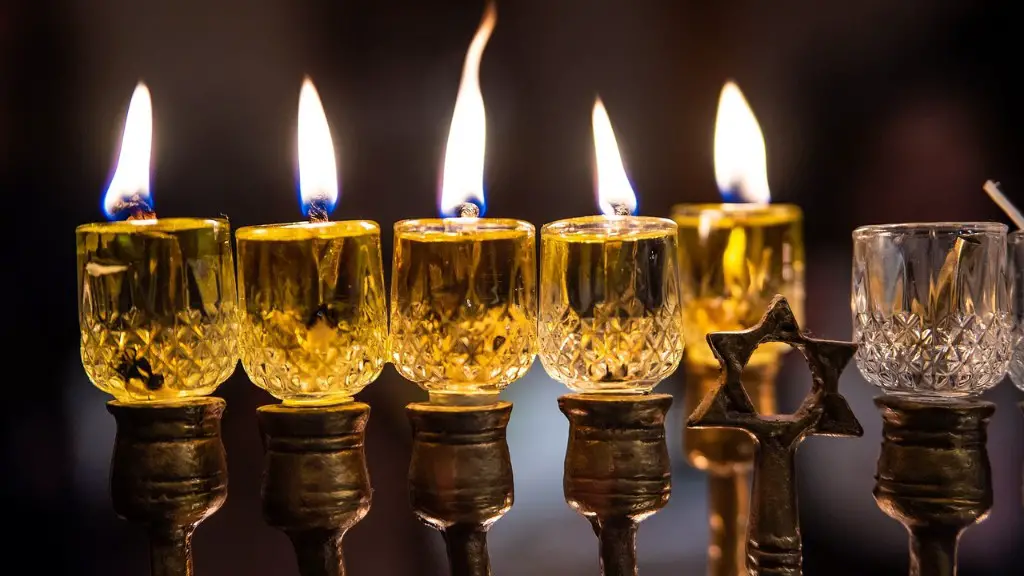Historical Overview of Afterlife Beliefs in Judaism
The history and evolution of afterlife beliefs in the Jewish faith dates back centuries. In the Torah, Jewish scriptures and traditions reveal a detailed account of life after death and a clear view of the afterlife. According to traditional Jewish theology, the afterlife is divided into two distinct parts – Olam Haba, or ‘world to come’, and Gan Eden, or ‘Garden of Eden’. Olam Haba is a place of eternal reward and punishment, while Gan Eden is a place of spiritual purification and joy.
The traditional beliefs of Jews, which were mainly based upon the teachings found in the Torah, taught that the souls of the dead were judged and rewarded or punished according to their deeds in life. Souls, which were considered to be a divine spark, were believed to ascend to their final reward or punishment in Olam Haba. The souls of the righteous and pious were rewarded with eternal bliss, while the souls of the wicked and impious were punished by being sent to the fiery pit of Gehenna. The souls of the righteous and faithful, who had lived righteous lives, were granted entrance into Gan Eden where they would partake in eternity in the presence of God.
In modern Judaism, the beliefs and teachings concerning life after death are often more philosophical and spiritual in nature, as compared to their traditional counterparts. In the twentieth century, the teachings of Judaism have evolved and changed due to the influences of secular thinking. Today, there is a much broader understanding of what happens in the afterlife, including teachings such as reincarnation, spiritual purification, and the ability to connect with the divine. While the core beliefs remain largely unchanged, the way in which they are understood and interpreted has shifted, leading to a more flexible view of the afterlife.
Judaism’s View on the Physical Aspects of the Afterlife
The physical aspects of the afterlife are another important aspect of the traditional views of the afterlife which continue to be held by many Jews today. Traditional belief teaches that the physical body of a deceased person will be reanimated at some point after death. While the exact time of re-animation is not known, it is traditionally believed to occur at some point in the future, either during the time of the coming of a messiah or at the end of the world. When this does happen, traditional Jewish belief teaches that the reanimated body will be perfect in every way and remain in the physical state for eternity. This physical resurrection is seen as a reward for the righteous and faithful who have lived a righteous life.
In modern Judaism, the physical aspects of the afterlife are not as concretely understood, and are often discussed on a much more theoretical level. This has led to much more diverse opinions on the topic. Some members of the faith argue that the material body is not important in the afterlife, while others argue that it remains an integral part of afterlife experience. Regardless of which side of the debate one falls on, the physical aspects of the afterlife remain an important component of the beliefs held by Jews.
Jewish Afterlife Rituals
Rituals are an important component of Judaism, and the same can be said for the afterlife. Traditional Jewish funerals typically involve closing the eyes of the deceased, standing in mourning with their peers, and reciting Kaddish, a special prayer for the dead. The burial of the deceased is also a crucial component of Jewish afterlife rituals and is an ancient tradition that goes back centuries.
The period of mourning for the dead is known as “shloshim”, a Hebrew word meaning “thirty”. During this period, friends and family mourn in different ways, such as attending funerals and services, reciting special prayers, or participating in various memorial activities. After the period of shloshim, traditional Jews believe that the soul of the deceased is ushered into its proper place in the world to come.
In more recent years, Judaism has introduced alternative rituals for mourning. Some modern Jews adopt memorial ceremonies which involve the scattering of ashes or the creation of memory gardens and other commemorative activities. These new practices have been embraced by many who desire spiritual comfort and remembrance of their deceased friends and family, but who may not be interested in traditional Jewish afterlife rituals.
What Happens to the Souls of Non-Jews After Death?
Traditionally, the Jewish faith has taught that all non-Jews, regardless of their beliefs, will experience some form of punishment in the afterlife. However, in recent years, there has been a shift in thinking regarding this concept. Many modern Jews believe that non-Jews can still receive some reward in the afterlife, even if they do not live according to the laws and beliefs of Judaism.
This alternative view of what happens to the souls of non-Jews after death is based upon the notion that non-Jews who live a life of moral integrity, even if they are not Jewish, can find a place in Olam Haba. This idea has been taught by many contemporary Rabbis, and is widely accepted by many Jews today.
In addition to this more progressive understanding of the afterlife of non-Jews, many Jews also embrace the belief that all souls are equal in the eyes of God, regardless of religion or belief system. This view suggests that all of the souls of the dead, both believers and non-believers, will receive eternal reward, even in the afterlife.
The Afterlife and the Purpose of Life
The afterlife also has implications for the purpose of life. According to traditional Jewish thought, the main purpose of life is to become a righteous and faithful servant of God, and that the afterlife is the ultimate reward for a life lived in service to God. The afterlife is seen as the ultimate goal for which all of mankind should strive, and those who live a life of obedience to God will be rewarded with eternal bliss in the afterlife.
Modern views on the afterlife have largely remained rooted in traditional understanding, but with a more open and flexible approach to interpretation. In response to the constraints of traditional theology, many Jews now see afterlife as a more symbolic concept, viewing it as a source of inspiration and hope for the future, rather than a literal destination or reward. This new understanding of the afterlife allows Jews to place greater emphasis on the life that is lived here on Earth, and to focus their energies on living a life of righteousness, joy, and purpose.
Conclusion
The afterlife is an important and complex concept in the Jewish faith, one that has evolved and changed throughout the centuries. While the traditional teachings concerning the afterlife remain largely the same, the way in which they are interpreted has shifted over time. This has led to much more flexible and diverse views on the afterlife and what happens to the souls of the dead, both believers and non-believers. Ultimately, the afterlife serves as a source of motivation and purpose for living a life of obedience to God and of righteousness.


